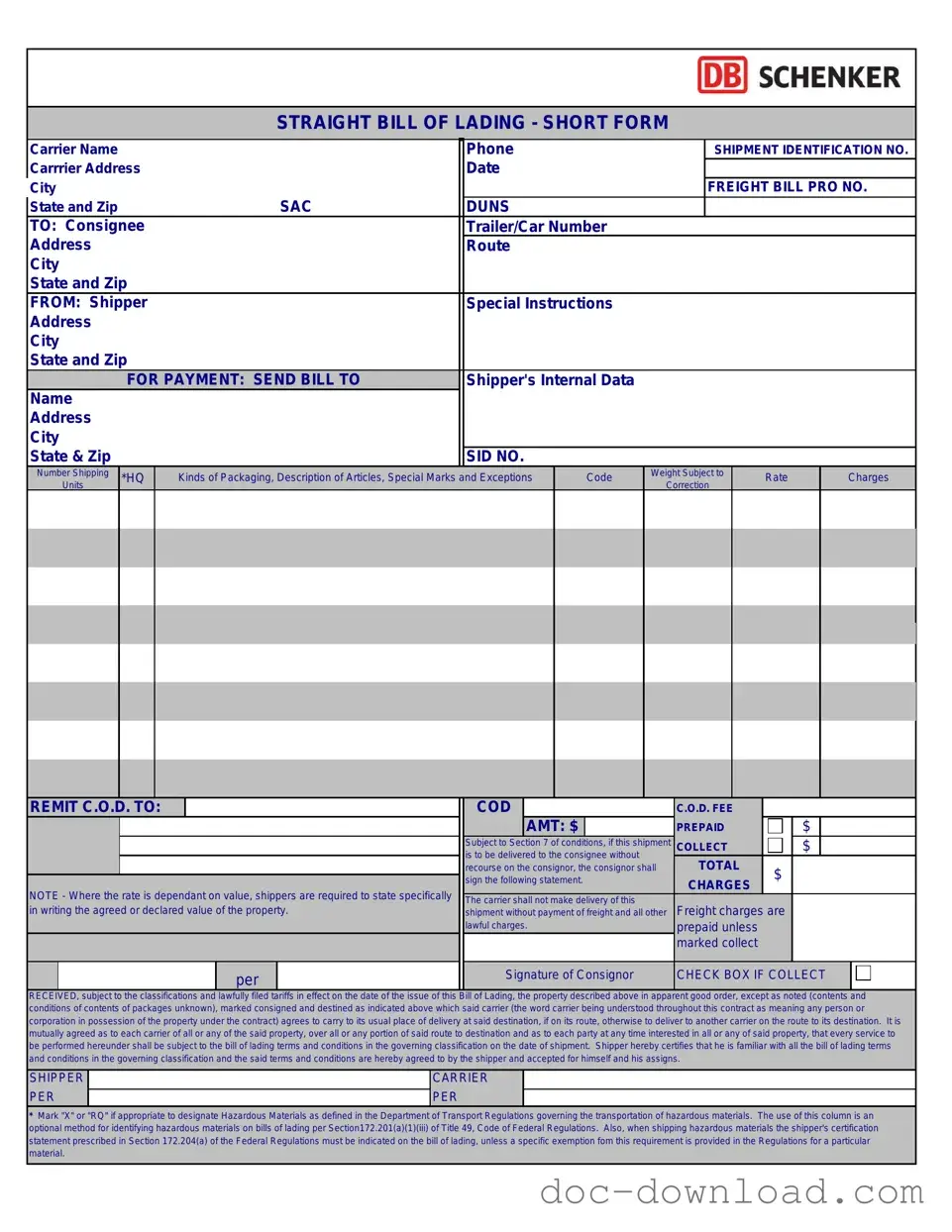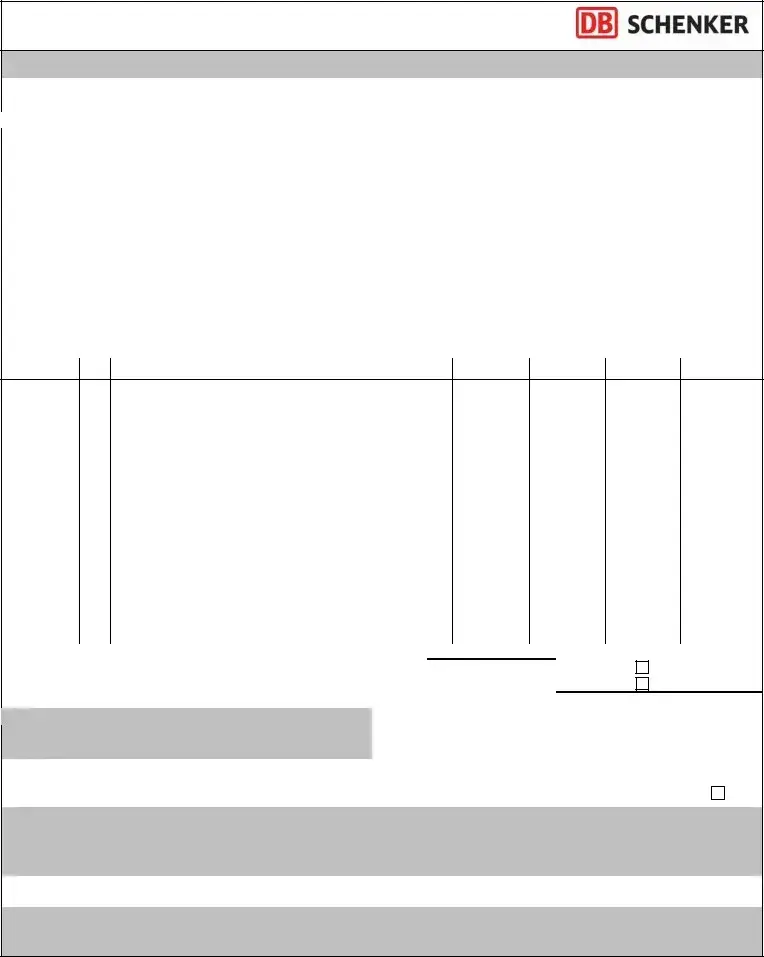The Straight Bill of Lading is often compared to a Warehouse Receipt. Both documents serve as proof of ownership and receipt of goods. A Warehouse Receipt is issued by a storage facility, confirming that goods have been stored there. Like the Straight Bill of Lading, it can be transferred, but it generally pertains to goods held in storage rather than in transit. Both documents provide essential information about the goods, including their description and quantity.
Another similar document is the Order Bill of Lading. This document also serves as a receipt for goods and can be used to transfer ownership. However, unlike the Straight Bill of Lading, the Order Bill allows for the transfer of title through endorsement. This makes it more flexible in transactions, particularly in the shipping industry, where goods may change hands multiple times before reaching their final destination.
A Commercial Invoice is another important document in international trade that shares similarities with the Straight Bill of Lading. While the Straight Bill serves as a shipping document, the Commercial Invoice details the transaction between the buyer and seller. Both documents are crucial for customs clearance and can be used to verify the value and quantity of goods being shipped. They work together to facilitate smooth international transactions.
To protect sensitive information during negotiations, ensure you utilize a proper Non-disclosure Agreement template to establish confidentiality between parties involved.
The Packing List is also comparable to the Straight Bill of Lading. It provides detailed information about the contents of a shipment, including item descriptions, quantities, and weights. While the Packing List is not a legal document like the Straight Bill, it complements it by ensuring that all items are accounted for during transit. This helps prevent disputes and ensures that the recipient receives the correct goods.
A Delivery Order is another document related to the Straight Bill of Lading. It instructs the carrier to deliver goods to a specified party. While the Straight Bill of Lading serves as a title document, the Delivery Order is more of a directive. Both documents are essential for the release of goods but serve different functions in the shipping process.
The Certificate of Origin is similar in that it is often required for customs clearance. This document certifies the country of origin of the goods being shipped. While the Straight Bill of Lading focuses on the transportation of goods, the Certificate of Origin provides important information that can affect tariffs and trade regulations. Both documents play critical roles in international shipping.
A Pro Forma Invoice can also be likened to the Straight Bill of Lading. This document outlines the terms of a sale before the actual transaction takes place. It serves as a preliminary bill, giving the buyer an idea of what to expect. While the Straight Bill of Lading is issued after the shipment, both documents are integral to the sales process, helping to clarify terms and conditions.
Lastly, the Freight Bill is similar in that it details the charges associated with transporting goods. It serves as a request for payment from the carrier to the shipper. While the Straight Bill of Lading focuses on the shipment itself, the Freight Bill provides a financial aspect to the transaction. Both documents are essential for the successful completion of shipping arrangements.

